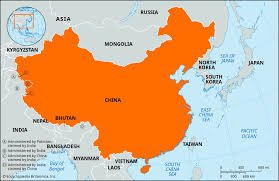China’s population has seen a decline for the first time in six decades, with the national birth rate hitting a record low of 6.77 births per 1,000 people. The population in 2022 was 1.4118 billion, which fell by 850,000 from 2021. This decline in birth rate has been happening for years and the government has implemented various policies to try to slow the trend, but to no avail. Seven years after scrapping the one-child policy, China has entered what one official described as an “era of negative population growth”.
This trend is likely to continue and may even worsen after the Covid pandemic. High youth unemployment rates and weaknesses in income expectations could delay marriage and childbirth plans further, dragging down the number of newborns. The death rate in 2023 is also likely to be higher than it was pre-pandemic due to Covid infections. Populations are also shrinking and ageing in other East Asian countries, such as Japan and South Korea.
China’s population trends over the years have been largely shaped by the controversial one-child policy, which was introduced in 1979 to slow population growth. Families that violated the rules were fined and, in some cases, even lost jobs. In a culture that historically favors boys over girls, the policy had also led to forced abortions and a reportedly skewed gender ratio from the 1980s.
The one-child policy was scrapped in 2016, and married couples were allowed to have two children. The government also offered tax breaks and better maternal healthcare, among other incentives, to try to reverse or slow the falling birth rate. However, these policies did not lead to a sustained increase in births. Some experts say that the policies that encouraged childbirth were not accompanied by efforts to ease the burden of childcare, such as more help for working mothers or access to education.
In October 2022, Chinese President Xi Jinping made boosting birth rates a priority. He said in a once-in-five-year Communist Party Congress in Beijing that his government would “pursue a proactive national strategy” in response to the country’s ageing population.
Apart from dishing out incentives to have children, China should also improve gender equality in households and workplaces, said Bussarawan Teerawichitchainan, director of the National University of Singapore’s Centre for Family and Population Research. Scandinavian countries have shown that such moves can improve fertility rates, she added.
China is facing a demographic crisis that will shrink its labor force and increase the burden on healthcare and other social security costs in the long run. The government must take proactive measures to address this challenge and ensure that the population stabilizes and grows in the future.














